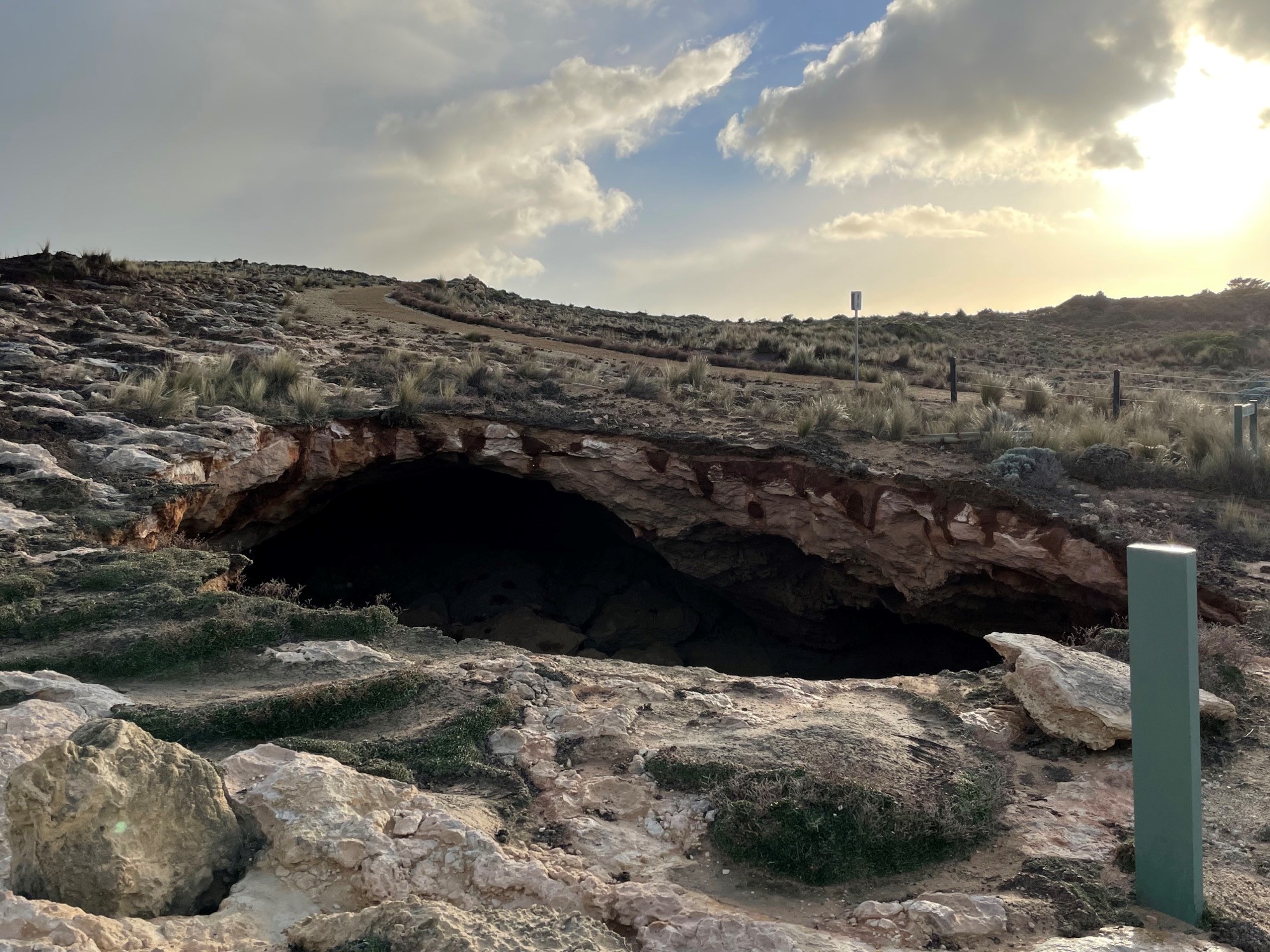Huge sinkhole bursts open near underwater 'blowhole' in South Australian coast
The hole measures about 40 feet wide, and is likely to collapse even more, authorities say.

In the middle of the night on Thursday (June 10), the ground near the Southern Australian tourist town of Robe suddenly gave way. Locals awoke to find an enormous sinkhole, roughly 40 feet (12 meters) in diameter, had opened along the picturesque Limestone Coast — and citizens are now being urged to stay away for fear that the hole could collapse even further, Australian news outlet ABC.net reported.
"There's no warning when these things give way," James Holyman, a chief executive for the District Council of Robe, told ABC. "It's a fair way down and the Southern Ocean is fairly churned with big [waves]."
Australia's 200,000-year-old Limestone Coast faces considerable erosion from the constant saltwater waves lapping at its edges, but there may be other forces at play there, too, Patrick Hesp, a coastal studies expert at Flinders University in Adelaide, told ABC. Recent heavy rains and ocean swells likely contributed to the sinkhole's appearance, Hesp said.
The hole is also located close to a natural underwater geyser known as a blowhole, Newsweek reported. Blowholes form as waves erode cliffside caves, sloshing their way deeper into the cliff and eventually vertically toward the surface. Occasionally, water sprays from the top of these holes, usually during high tides.
Holyman said that, while the blowhole hasn't blown for several years, the constant wave action in the area has been gradually undercutting the cliffs, making collapses like this one more likely. An investigation of the hole revealed that the site is still unstable, and likely to collapse further, Holyman said.
Originally published on Live Science.
Get the world’s most fascinating discoveries delivered straight to your inbox.

Brandon is the space / physics editor at Live Science. With more than 20 years of editorial experience, his writing has appeared in The Washington Post, Reader's Digest, CBS.com, the Richard Dawkins Foundation website and other outlets. He holds a bachelor's degree in creative writing from the University of Arizona, with minors in journalism and media arts. His interests include black holes, asteroids and comets, and the search for extraterrestrial life.


